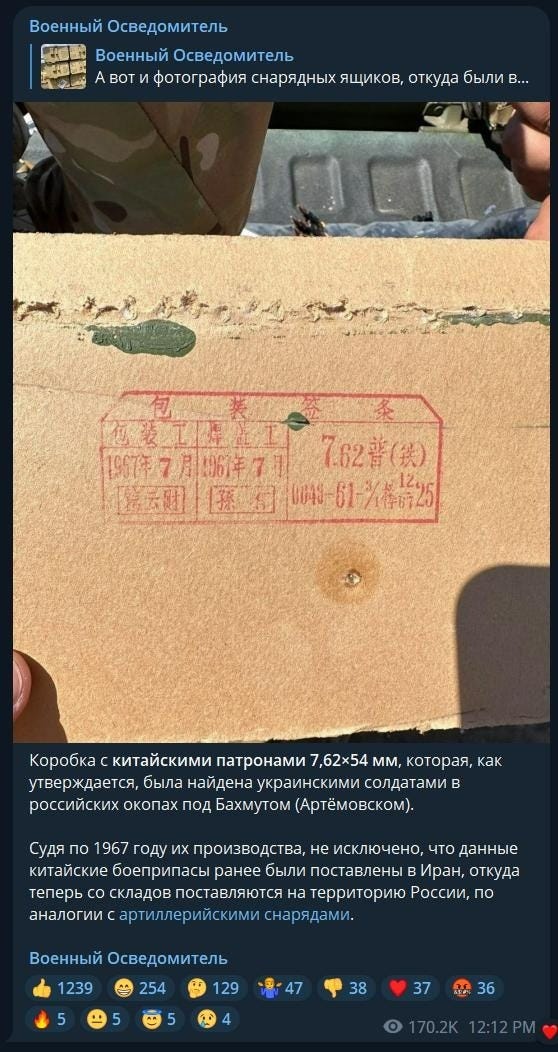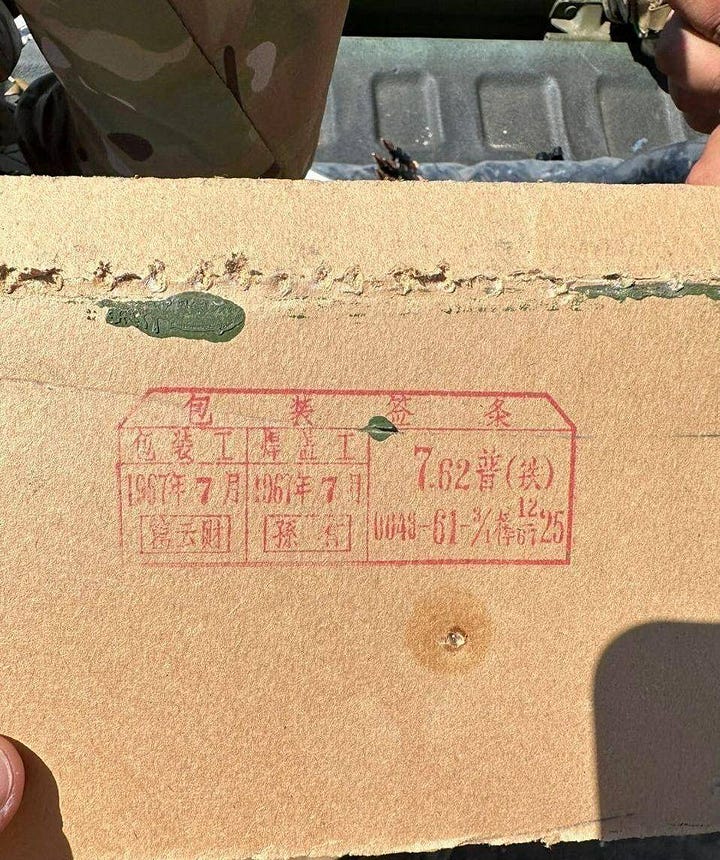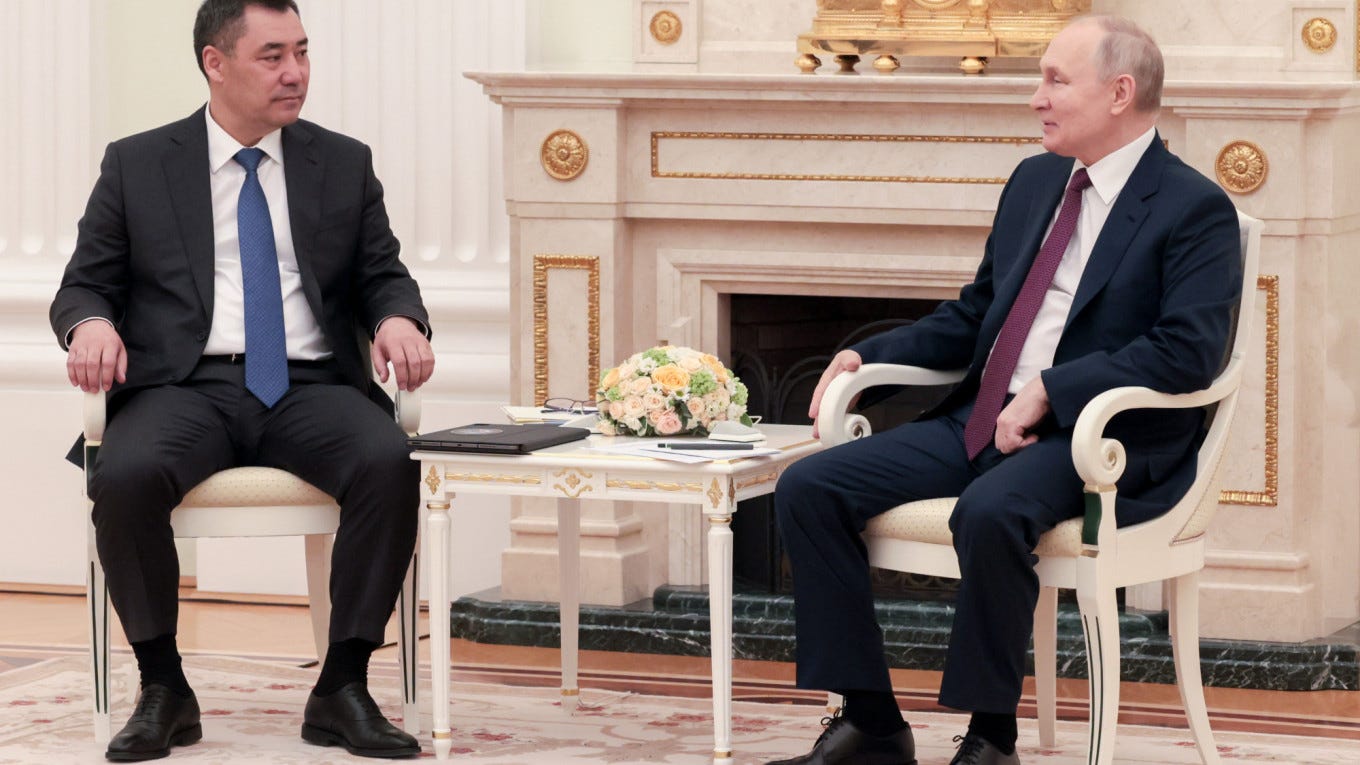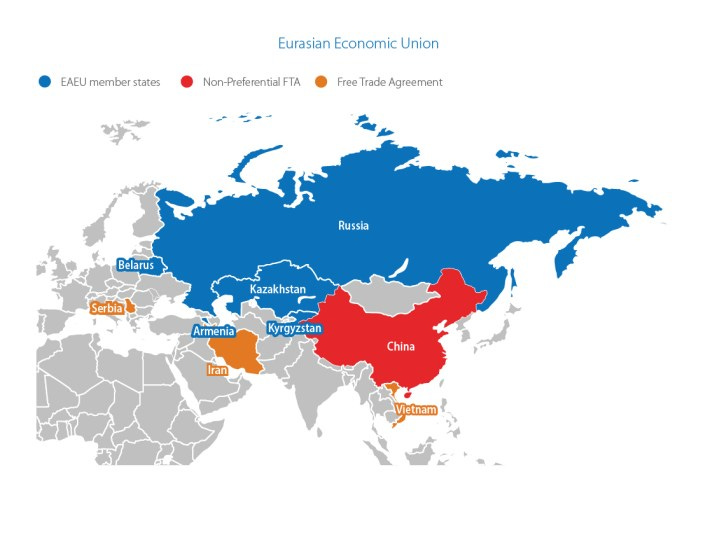Aug 12: Joby Warrick, Sanctions evasion in Central Asia
As published in The Washington Post, on July 19, 2023
In Central Asia, a hidden pipeline supplies Russia with banned tech
By Joby Warrick, The Washington Post, 19 July 2023
Moscow looks south for partners willing to help it circumvent bans on Chinese drones and German electronics
On the shipping label, the Chinese drones were billed as heavy-duty cropdusters, the kind used by orchards and big farms. But the identity of the buyer — a Russian company that purchased a truckload of the aircraft in early May at nearly $14,000 each — hinted at other possible uses.


The drones’ potential military value, ironically, had been noted by Russia’s government, which last year seized four aircraft of the same model in eastern Ukraine and claimed that Kyiv was planning to use them for chemical warfare. The sturdy all-weather quadcopters are built to carry payloads of nearly 70 pounds and are designed to glide at treetop level trailing a fog of liquid chemicals.
Whatever their intended use, the drones were on the final leg of a trek across Central Asia when they were intercepted by customs officers near the border between Kazakhstan and Kyrgyzstan. To U.S. officials recounting the events weeks later, the episode was unusual: More often than not, they said, such goods pass into Russia uninterrupted.
The seizure of the drones was hailed as a rare victory in a whack-a-mole effort to halt the flow of banned hardware and electronics pouring into Russia in support of its war effort in Ukraine. Blocked from procuring military goods from Western countries, Moscow has increasingly looked for help from the former Soviet states of Central Asia, some of which are historically and financially bound to Russia but also trade extensively with Europe and China.
Biden administration officials say they are particularly concerned about the role played by Kyrgyzstan, the country from which the drone shipment originated. The mountainous, landlocked country of 6.7 million people was once the southern frontier of the Soviet empire, and it is now home to numerous businesses that have become a conduit for Western and Asian goods that Russia can’t legally obtain elsewhere, officials said in interviews.
Following the Kremlin’s Ukraine invasion — and with greater intensity in recent months — Kyrgyzstan witnessed a striking expansion of import-export companies that do business mainly with Russia. The firms are profiting from soaring sales of sanctioned Chinese and European goods — from drones and aircraft parts to rifle scopes and advanced bomb circuitry — most of which are flown or shipped overland to companies in Russia, said a senior U.S. official with detailed knowledge about the transactions.
After months of fruitless visits to the Kyrgyz capital of Bishkek by a stream of U.S. and European diplomats, the Biden administration is preparing new economic measures to pressure the country to halt the trade, according to two U.S. officials familiar with the plans. The actions, which in the past have included sanctions or a “blacklisting” of companies accused of violations, could come as early as this week, said the officials, who spoke on the condition of anonymity to discuss diplomatically sensitive deliberations.
“Kyrgyzstan, while small relative to other countries, is a clear example of every factor at play at once to create an unacceptably [sanctions] evasion-friendly environment,” the senior official said.
Publicly accessible trade documents offer hints about the scale of the Kyrgyz shadow bazaar. Records show the overall volume of Kyrgyzstan’s exports to Russia skyrocketed in 2022, rising by 250 percent over the previous year, before the invasion of Ukraine. For some items, such as rifle scopes, there was no previous record of Kyrgyzstan ever exporting such goods to Russia.
Trade documents also suggest a high level of coordination with Moscow’s procurement efforts. Records from early this year show Kyrgyz companies making bulk purchases of sensitive electronics — including hundreds of thousands of dollars’ worth of specialized semiconductors and voltage amplifiers — from Chinese and South Korean companies in February and March. A nearly identical quantity of the same types of electronics was exported from Kyrgyzstan to Russia over the same period, the documents show.
The Russian firms that received the goods were in most cases known suppliers to Russia’s defense industry, the senior U.S. official said. The apparent choreography of the third-party transactions was seen as the work of Russia’s intelligence services, which U.S. officials say are now directly involved, along with a range of war profiteers, in schemes aimed at circumventing economic sanctions.
The Russian Embassy in Washington did not immediately respond to a request for comment.
The Kyrgyz Embassy in Washington, responding to a request for comment, said in a statement that the country’s leaders were committed to adhering to international regulations and cracking down on contraband and other illicit trade. The statement attributed the surge in trade with Moscow in part to improvements in electronic systems for tracking the flow of goods across the country’s borders.
While the embassy acknowledged previous reports about sanctions violations, it said critics failed to take into account the “real economic context.”
“Kyrgyzstan and Russia are the members of Eurasian Economic Union and, in general, Russia is one of our main trading partners,” it said. “More than a million of our citizens work in Russia.”
Current and former U.S. officials acknowledged Kyrgyzstan’s geopolitical and economic difficulties, while noting that some of the country’s neighbors appear to be making a more sincere effort to enforce the sanctions, even in the face of enormous pressure from Moscow.
“Geography, proximity and influence matter,” said Juan Zarate, who served under the George W. Bush administration as the Treasury Department’s inaugural assistant secretary for combating terrorist financing and financial crimes. In countries such as Kyrgyzstan, he said, there must be “political will to cut preexisting relationships, along with the courage and capacity to enforce sanctions” — even when such actions run the risk of “upsetting a dangerous neighbor.”
Kyrgyz officials declined to comment on the reported attempt to export Chinese drones to Russia, although the events were described in local news accounts in both Kyrgyzstan and neighboring Kazakhstan, where the aircraft were confiscated two months ago.
The batch of Chinese DJI Agras T-30 cropduster drones had been acquired by a Kyrgyz firm, with plans to resell them to a company in Russia. The 14 drones were being shipped overland through Kazakhstan when they were flagged by customs officials for lacking the proper export paperwork. The aircraft ultimately were impounded by the Kazakhs and never reached the Russian border, according to Kazakh media accounts. Officials at the Kazakh Embassy in Washington declined to comment about the incident.
The same Chinese manufacturer, DJI, produces similar drones for use by law-enforcement agencies, including in the United States, where the company’s models remain popular despite bans or curbs on federal use of the aircraft since 2017. DJI suspended sales of its drones to Ukraine and Russia after the February 2022 invasion, perhaps explaining why the Russian purchaser of the T-30s used an indirect route in trying to acquire them.
Both Ukraine and Russia have fully embraced the use of unmanned aerial vehicles, or UAVs, for a wide range of military missions, including assaults on military and civilian targets with self-detonating drones, as well as the use of lightweight “hobby” UAVs to drop small munitions on troop positions and vehicles. Both sides rely on drones for surveillance and artillery spotting. Moscow has expanded its arsenal with hundreds of powerful attack drones purchased from Iran, and it has recently begun work on a Russian assembly line to manufacture Iranian-designed UAVs.
There is no record of Agras T-30 drones being deployed on a battlefield, although the aircraft possesses military utility because of its 66-pound payload capacity, which could be used for dropping bombs or moving weapons, said Charles Rollet, a researcher for IPVM, a publication that monitors the global surveillance industry. While relatively noisy compared to traditional military reconnaissance drones, the T-30 can fly at altitudes of up 14,000 feet and operate in all weather, day or night, according to the manufacturer’s website. It is equipped with an array of sophisticated sensors, including cameras, radar and a searchlight for illuminating objects on the ground.
After the Russian military seized the four T-30s from Ukraine last year during fighting near the eastern city of Kherson, Kremlin officials suggested in Russian media reports that Kyiv intended to use them in chemical attacks against Russian troops. There is no evidence that Ukraine has used or possesses chemical weapons.
U.S. intelligence officials have long worried, however, that Russia might resort to using its known stockpile of chemical agents to halt advancing Ukrainian troops.
Russian forces appear to have used noxious gases — believed to be variations of tear gas — against Ukrainians in at least two incidents since the invasion, according to intercepted Russian communications revealed in top-secret documents leaked on Discord and obtained by The Washington Post, as well as battlefield video broadcast by Russian news media.
Britain and the United States have officially registered their concerns about the incidents, which, if confirmed, would constitute a violation of the Chemical Weapons Convention, of which Russia is a signatory. Investigators have previously accused Moscow of using banned chemical weapons in assassination attempts and for providing cover to its ally Syria after that country’s use of deadly nerve agents against its own citizens.
Although the T-30 drones never reached their intended destination, U.S. officials say it is inevitable that Russia will try again to obtain unmanned aerial technology it lacks, perhaps using other partners and methods, or different kinds of aircraft.
U.S. officials acknowledge that, in most cases, countries that are determined to obtain banned goods eventually succeed, although rigorous enforcement of trade embargoes can eventually drive up costs of doing business.
“The Russians are motivated to obtain the supplies of weapons and technology they need to sustain their military and war in Ukraine, and they will do whatever is necessary,” said Zarate, the former Treasury official and now co-managing partner of K2 Integrity, a risk advisory company.
Zarate likened sanctions enforcement to weeding an unruly garden: a “long, complicated effort, with emphasis on continuous enforcement, crackdowns on evasion, and demonstration that the Russian economy will continue to be isolated and risky for anyone electing to do business with Russia.”
Cate Cadell contributed to this report.




